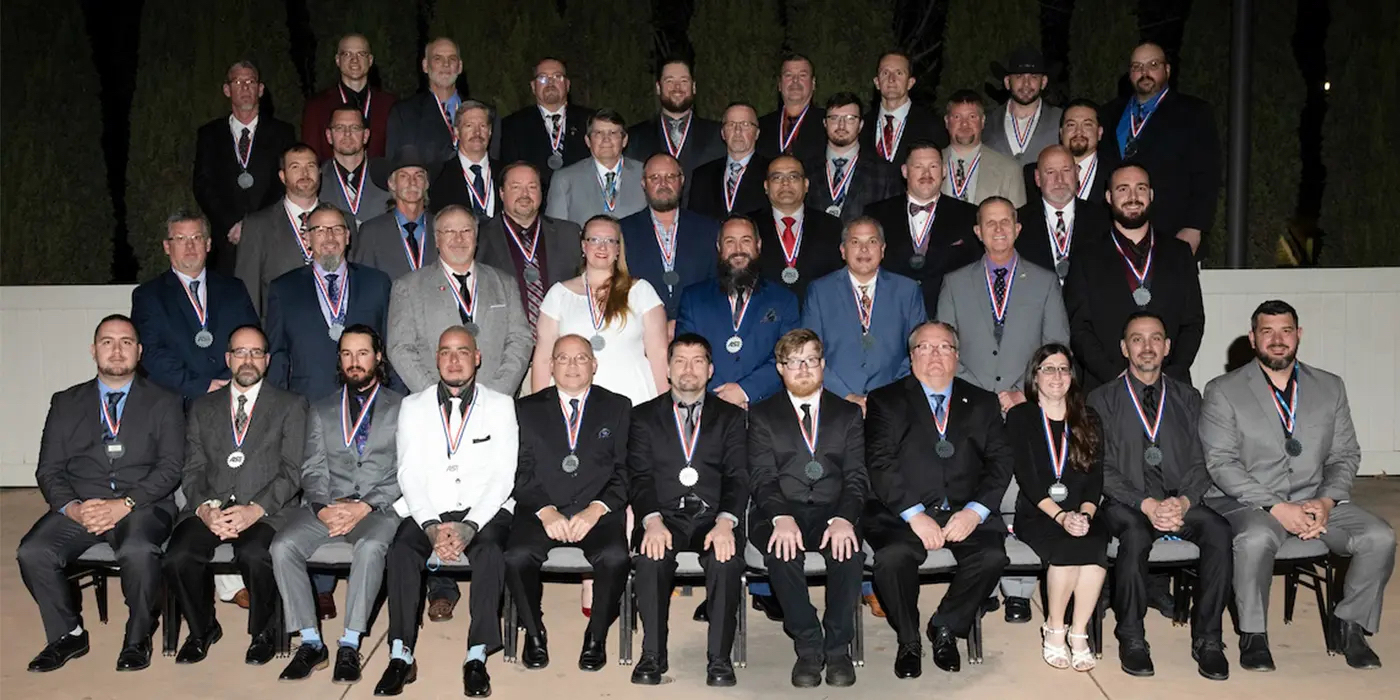By Mark J. Claypool
BodyShop Business Contributing Editor
Over a year ago, after sending out an e-newsletter with an article I wrote listing the words managers typically use when they criticize employees, I was taken to task by a top manager of a large multi-shop operator (MSO). The premise of my article was that you’re going to get further with employees when you carefully choose your words, but the MSO manager vehemently disagreed. He said he and his organization ruled by fear and intimidation and it worked just fine. But I knew from visiting that shop that fear and intimidation showed on the employees’ faces. You could sense it in their lack of enthusiasm. Most importantly, it showed in the organization’s high turnover rate.
In my article, I reasoned that if you point out positives first and then deliver the criticism, and follow that up with another positive (referred to by social psychologists as the “sandwich technique”), you’re more likely to see the change you desire.
Numerous psychological studies have proven that delivering criticism in this manner will make the recipient of that criticism less likely to take it as a personal attack. Rather, he or she will consider it an attempt to help him or her improve, and he or she will listen rather than be defensive.
Employee Turnover
The true cost of employee turnover is difficult to measure, but it’s there and likely much higher than you realize. The Society for Human Resource Management estimates that it costs a business over $3,500 to replace even a low-wage, entry-level employee due to costs associated with recruiting, interviewing, hiring and training – not to mention the lost production during the time the position was open. Can you see how this cost could be much higher when replacing a senior manager, estimator, technician or painter?
Do the math. If you lose a senior level “A” tech who produces $250,000 in billable labor for you in a year’s time, the loss of productivity costs you over $4,800 each week the position remains open, plus what you’d make in parts, paint and materials.
And did you invest in training this now-departed “A” tech? That investment is gone too, isn’t it? If you hire a replacement “A” tech who doesn’t have the training required to meet insurance company DRP standards or OEM certification requirements, you’ll have to make that investment again, with no guarantee of a return.
Blame Is Lame
The problem is that most managers blame someone or something else for the loss of employees, whether it be low wages, non-competitive benefits or a lack of work. But rather than pointing fingers at something else, they should look internally and determine if employee retention is on anyone’s job description or goals within the organization.
There’s no good reason for owners and managers to operate in ways that cause employees to quit their jobs, but here’s why it happens:
• There’s no process in place to identify costs. Surveys have shown that only 44 percent of employers had a process in place to estimate turnover costs; 43 percent relied on intuition; and 13 percent had no process at all.
• Most companies don’t measure turnover costs. Or, if they do, owners/managers aren’t informed about them or they discount them altogether. If owners/managers truly knew the costs, they would likely dedicate more time to issues causing higher turnover.
• Some owners/managers have been lulled into the belief that high turnover is simply an unavoidable cost of doing business. However, you can avoid much of the turnover in your organization by taking certain steps (see box at end of story). The trick is to replace the employees you need to replace and keep the ones you know you need to keep. When measuring this, use two different categories: one for employees you don’t mind losing and one for employees you wanted to keep but lost anyway.
• They wait for things to become a crisis. This can paralyze a manager. If you wait for a crisis to develop before taking action, it’s often too late.
• Some managers are stubborn and refuse to adjust their management style, no matter what the facts are.
Step Up to the Plate
Shop owners and managers must take responsibility for employee retention. In addition to their regular duties, they have other, oft-overlooked responsibilities. These include:
• Developing staff for the present.
• Developing staff for the future (with effective in-house apprenticeship systems like Mentors at Work).
• Getting the right people on the bus and the wrong people off the bus (from Jim Collins’ book, “Good to Great”).
• Keeping the right people on the bus (i.e. retention).
When taken seriously, managers who develop their staff for the future build bonds with their teams, fostering loyalty and keeping the team motivated.
So how do we address employee retention? Here are some strategies:
• Show you care. Make your appreciation known to those who earn it. Understand their personality profile and adjust your management style accordingly. Learn about your people’s lives outside of the workplace, including things like family, interests or birthdays. When you learn what they care about and show genuine interest in them, you establish a special connection that’s rarely duplicated elsewhere.
• Recognize and praise. The value of this can’t be underestimated. People who don’t feel appreciated will keep their eyes open for opportunities elsewhere. Be sincere and honest with your praise and recognition and specifically point out what you like about what they’re doing.
• Make their work important. Show employees they’re making a difference in the lives of others. Make them feel instrumental in the overall team effort and help them see their connections to your customers.
• Seek answers to tough questions. Find out what needs to be done to make people want to stay and how to create an environment that fosters team spirit. Find out if your people are challenged in their jobs, if they feel they can come to you with any issue that may come up, or if they have suggestions on how to improve productivity, morale, customer service or profitability. For new hires, after a few weeks on the job, ask if their experience so far has met their expectations and if they have any frustrations. As a new observer in the shop, do they have any suggestions?
• Tell your people that they’re important to you, and back it up with actions. Ask them to come to you if they feel like they want to leave so you’ll have a chance to address their concerns. Don’t ever let one of your competitors show more interest in your people than you do. Routinely ask, “What’s on your mind?” or, “How am I doing?” Establish trust, truly listen to what you’re hearing and respond accordingly. Be willing to accept criticism the same way you expect your employees to: not as a personal attack.
• Get employees involved, ask for their input and make them feel like they’re part of something special. Engaged employees are happy employees, but the opposite is true, too. According to Gallup, disengaged workers cost employers over $300 billion per year. Disengaged employees impact absenteeism rates and overall employee retention rates, too. According to HRWorld.com, highly engaged employees will be 26 percent more productive than other employees, translating into a 13-percent increase to the bottom line.
• Retention is a team sport. Make everyone responsible for it. If someone is unhappy, they’ll usually talk about it with other staff members and not management. Encourage staff to give you a heads up and try to address the disgruntled employee’s situation before it gets out of hand.
• Learn your employees’ goals and dreams and help them achieve them. Assist them in acquiring the knowledge and skills to fulfill their goals. Help them see how what they’re learning can be applied in your facility and give them rewarding, valuable experience.
• Set your people up to succeed. Establish reachable goals and objectives, touch base along the way, provide motivation and encouragement, and watch them thrive. Earn their respect and they’ll want to please you. And when you’re pleased, let them know it.
• Help your people through change. Change is painful, uncomfortable and distracting. During periods of change, like moving through 5S and lean activities, be especially proactive in your communications, inspiration and encouragement. Relate to your people as they’re feeling the effects of change and help them through it.
• Practice what you preach. No special rules apply to you or to family members or close friends on staff. Follow the “Do as I do” principle and don’t fall into the trap of “Do as I say, not as I do.” Your people watch you with a critical eye, so be genuine and sincere. Lead by example, or they’ll lose respect for you.
Where to Begin
Where should you begin with an employee retention overhaul? Well, you could continue to manage by fear and intimidation like the MSO I referred to earlier, but I don’t recommend it. Remember, a positive relationship between management and employees is the foundation of retention. Begin with an assessment. Check out this employee retention checklist to see how you stack up.
Next, talk with your existing staff and contact those who have recently left you. If you fear you won’t get an honest answer from your past and present employees when you approach them yourself, use a third party.
Don’t try to do too much too quickly. Select the most important things that will bring you immediate results, then peck away at the other issues later.
Not Easy
It’s not easy to address employee retention on top of everything else you do, but it’s essential if you want to retain the world-class workforce that today’s marketplace demands.
Inspire your people. Help them learn, continuously improve and grow. Praise them. Help them live their dreams and reach their goals. Make them feel like they’re valuable to the organization, and they’ll be energized in their work. This energy will then spread to your customers, who will feel it and benefit from it. When that happens, everybody wins. And make sure to keep it up – retention requires ongoing care to become part of your culture.
BodyShop Business Contributing Editor Mark Claypool has over 25 years of experience in the fields of workforce development, business education partnerships, apprenticeships and training. He is the owner of two companies, Select Tech, which provides standard operating procedural development through www.sopmd.com, and Optima Worldwide, which provides Web site design, development and search engine optimization services. Claypool is a former vice president of operations for VeriFacts Automotive and the founder of Mentors At Work (now a division of VeriFacts). Claypool is the former executive director of the I-CAR Education Foundation, the National Auto Body Council (NABC) and co-founder of the Collision Industry Foundation. He was the national director of development for SkillsUSA and serves, on a volunteer basis, as the SkillsUSA World Team Leader for the WorldSkills Championships.













